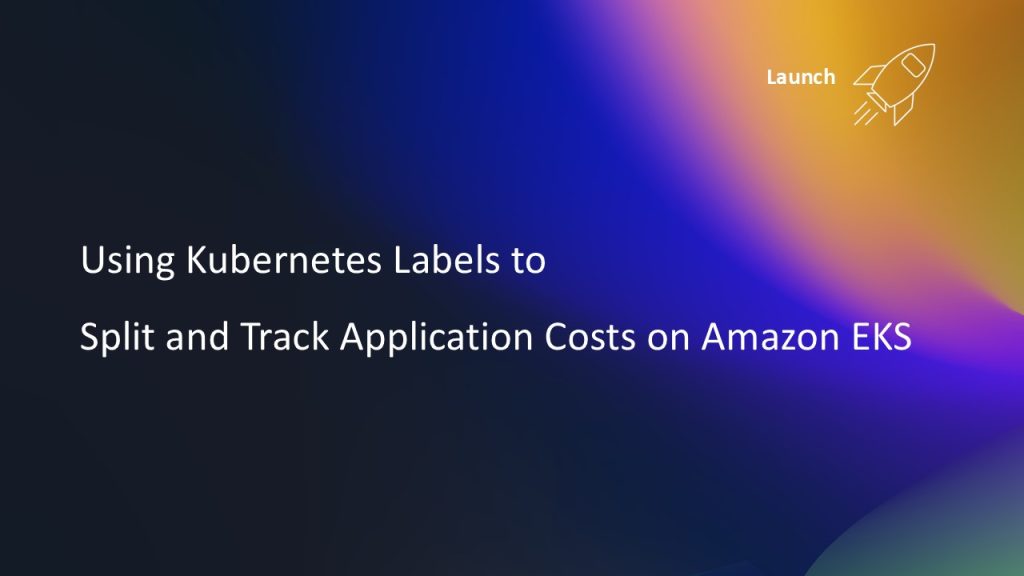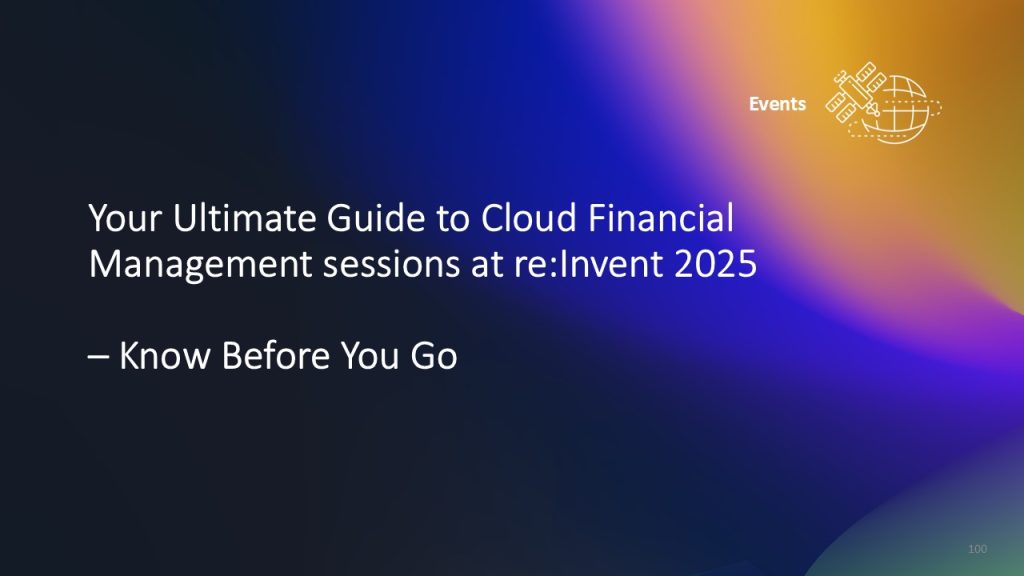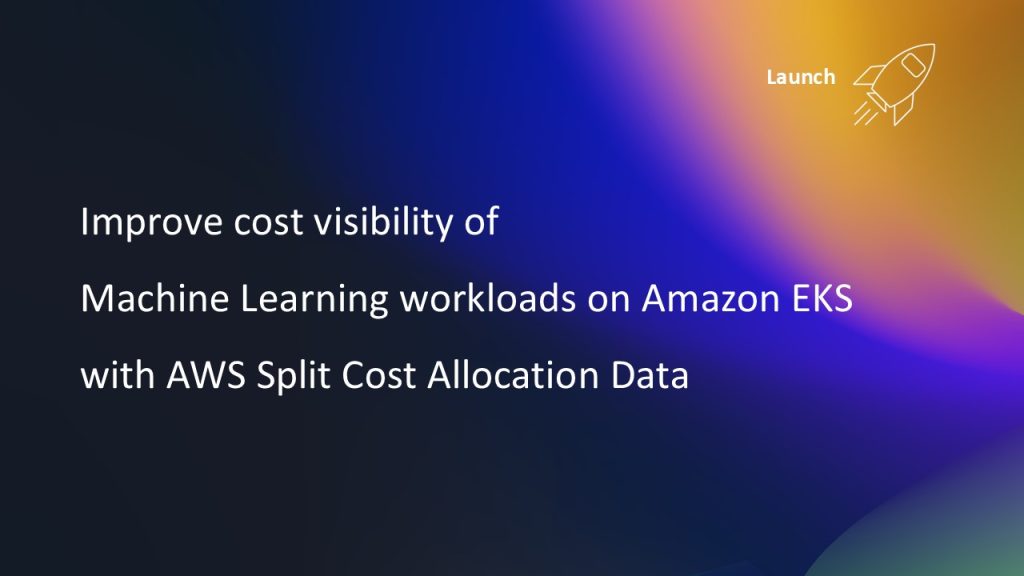AWS Cloud Financial Management
Category: Compute
Using Kubernetes Labels to Split and Track Application Costs on Amazon EKS
We’re excited to announce support for Kubernetes labels in split cost allocation data for Amazon Elastic Kubernetes Service (EKS). With this launch, you can now import Kubernetes labels as user-defined cost allocation tags into split cost allocation data, allowing you to attribute the cost of your applications running on an Amazon EKS cluster using these labels in AWS Cost and Usage Reports (CUR). This enables you to allocate your Kubernetes costs based on your specific business requirements and organizational design.
A FinOps Guide to Comparing Containers and Serverless Functions for Compute
The decision between Containers and Serverless Functions – or the implementation of both – should be driven by a thorough understanding of workload characteristics, cost implications, and operational requirements. As FinOps professionals, you should work closely with development and operations teams to analyze usage patterns, model costs under different scenarios, and consider factors like development velocity, operational overhead, and long-term maintainability. By leveraging the strengths of both Containers and Serverless technologies, you can build flexible, cost-effective cloud architectures that adapt to changing business needs while optimizing resource utilization and expenditure.
Your Ultimate Guide to Cloud Financial Management sessions at re:Invent 2025: Know Before You Go
Are you ready to maximize your Cloud Financial Management (CFM) learning and networking time at re:Invent 2025? As usual, I’ve put together this comprehensive guide to help you plan your schedule and make the most of the CFM sessions available this year. This year’s catalog features an exciting mix of content across different formats: from breakout, chalk talks, workshops, builder’s sessions, to code talks.
Introducing Budget Controls for AWS: Automatically Manage Your Cloud Costs
If you are new to AWS, you may be wondering how you can learn and experiment with cloud services while keeping your spend under your control. Budget Controls for AWS is an open-source solution designed to solve this problem. This solution was designed for customers new to AWS with no prior experience. It automatically watches your spending and takes actions you define when costs reach certain thresholds. Think of it as a safety net that can send you alerts, temporarily stop resources, or even delete them to prevent runaway costs.
Improve cost visibility of Machine Learning workloads on Amazon EKS with AWS Split Cost Allocation Data
We are excited to introduce split cost allocation support for accelerated workloads in Amazon Elastic Kubernetes Service (EKS). This enhancement to Split Cost Allocation Data for EKS enables customers to track container-level resource costs for accelerator-powered workloads. Split Cost Allocation Data now utilizes Trainium, Inferentia, NVIDIA and AMD GPUs, complementing existing CPU and memory cost tracking capabilities. This cost data is available in the AWS Cost and Usage Report (legacy and CUR 2.0), providing organizations with a consolidated view of their cloud expenditures. This feature is now available across all AWS commercial regions (excluding China regions) at no additional cost to customers.
Navigating GPU Challenges: Cost Optimizing AI Workloads on AWS
Navigating GPU resource constraints requires a multi-faceted approach spanning procurement strategies, leveraging AWS AI accelerators, exploring alternative compute options, utilizing managed services like SageMaker, and implementing best practices for GPU sharing, containerization, monitoring, and cost governance. By adopting these techniques holistically, organizations can efficiently and cost-effectively execute AI, ML, and GenAI workloads on AWS, even amidst GPU scarcity. Importantly, these optimization strategies will remain valuable long after GPU supply chains recover, as they establish foundational practices for sustainable AI infrastructure that maximizes performance while controlling costs—an enduring priority for organizations scaling their AI initiatives into the future.
Optimizing cost for building AI models with Amazon EC2 and SageMaker AI
Amazon EC2 and SageMaker AI are two of the foundational AWS services for Generative AI. Amazon EC2 provides the scalable computing power needed for training and inference, while SageMaker AI offers built-in tools for model development, deployment, and optimization. Cost optimization is crucial since Generative AI workloads require high-performance accelerators (GPU, Trainium, or Inferentia) and extensive processing, which can become expensive without efficient resource management. By leveraging the below cost optimization strategies, you can reduce costs while maintaining performance and scalability.
Automating custom rates at scale: an Amazon case study with AWS Billing Conductor
In this blog post, we discuss how Amazon used AWS Billing Conductor to build a custom solution, enabling them to view their AWS cost at internal rates in AWS Cost Explorer and AWS Cost and Usage Report (CUR).
re:Invent 2024 Cost Optimization highlights that you were not expecting
With re:Invent 2024 in the books, and over 50 launch announcements, here are four that we’re most excited about. The overarching theme of these launches appears to be leveraging Amazon’s automation capabilities to optimize costs and improve efficiency for customers.
2024 re:Invent announcement recap for AWS Cloud Financial Management services
With great pleasure, I am happy to share with you the ten features recently added to the AWS Cloud Financial Management portfolio of services. We hope that these ten new features will help accomplish your daily FinOps tasks more effectively. These new features are like our holiday gifts to you. Enjoy your holiday and these special gifts from us. We look forward to hearing about your experiences with them.









